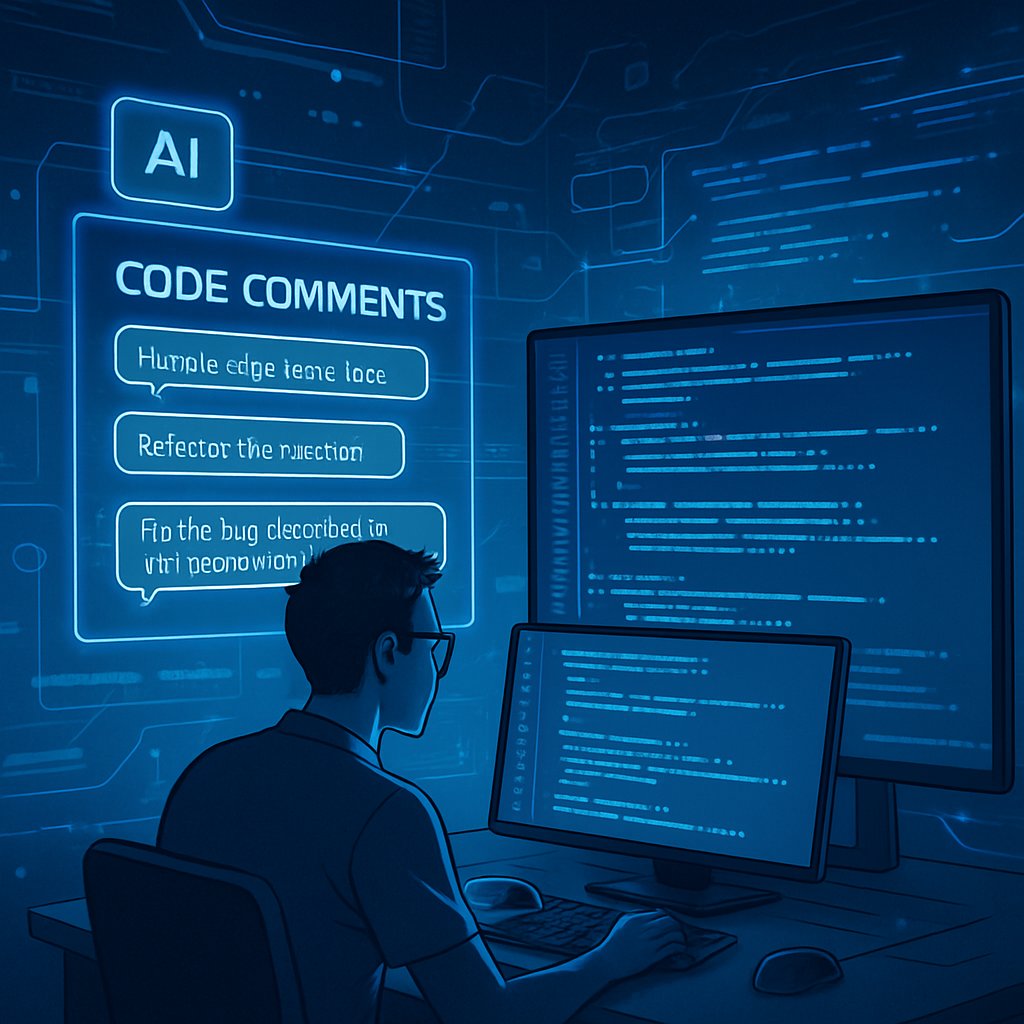Unlocking Code Comments: How AI is Enhancing Developer Understanding
Have you ever tried diving into some code and hit a wall because the comments just didn’t help? We've all been there — scrolling through lines of cryptic data, wishing for that one insightful note that would clarify everything. Well, a groundbreaking study led by Yanzhen Zou and her colleagues is shaking things up in the world of code understanding by unveiling a new approach to generate thoughtful code comments that truly enrich our coding experience.
In this blog post, we’ll explore the fascinating research behind IsComment, an innovative method that combines issue reports with AI to produce meaningful comments that clarify what code truly does. Let’s unravel the magic behind this approach and understand its practical implications in today’s programming landscape.
What's the Big Deal with Code Comments?
Let’s start with the basics. Code comments serve as a guide for developers, providing context, explanations, and clarifications about what a piece of code is meant to achieve. However, not all comments are created equal.
The Good, the Bad, and the Ugly of Code Comments
- Generic Comments: These are often dull and repetitive, merely rehashing what the code is doing. Think of these as vague instructions: “This function moves things around.” Not very helpful, right?
- Supplementary Comments: These gems delve deeper, shedding light on the reason behind the code’s existence, its design rationale, and how to use it effectively. They’re like a good mentor explaining not just the how but also the why and what if of coding decisions.
While supplementary comments are incredibly useful, they're lacking across many projects. Many tools and even AI models struggle to produce these insightful annotations because they often rely solely on code itself, without external context.
Enter IsComment: Revamping Code Comment Generation
So, how does IsComment flip the script? Instead of generating comments based just on the code, this method pulls rich information from issue reports — documents where developers discuss bugs, feature requests, and more – to enhance comment quality. Let’s break down how it works.
Step 1: Understanding Issue Reports
The authors of the research identified five key types of information that issue reports often contain, which can be valuable for crafting supplementary comments:
- Functionality: What the method is designed to do.
- Rationale: Why it was implemented in a particular way.
- Implication: Any performance-related traits of the method.
- Concept: Key terms and their explanations.
- Directive: Important notes on usage or restrictions.
With this framework, they’ve set a foundation for extracting rich insights from the issue discussions.
Step 2: Retrieval Magic
Once the relevant types of information were identified, IsComment moved on to retrieve sentences from issue reports that contained these insights. The challenge? Issue reports can be lengthy and full of noise. Thus, just pulling the entire report won’t do— it needs to be tailored!
In this phase, the researchers employed AI tools to target relevant sentences more effectively, focusing on those that could inform and enhance the comments of the code directly.
Step 3: Crafting Comments
With the selected sentences in hand, it was time for the AI to work its magic. The researchers orchestrated a process where these sentences could be manipulated into coherent comments that developers would find genuinely helpful, rather than just another robotic output.
Step 4: Ensuring Reliability
Not all generated comments are created equal. The researchers also put in place a verification mechanism to filter out comments that were either irrelevant or unverifiable based on the issue reports. This approach minimizes hallucinations—those annoying instances where the AI produces convincing but incorrect or unrelated information.
The Results: A Significant Leap Forward
In practical testing, IsComment significantly outperformed standard large language models (LLMs), achieving much higher coverage of manual supplementary comments. Here’s some eye-opening statistics:
- GPT-4o: Enhanced from merely covering 35.8% of manual comments to an impressive 88.4%.
- ChatGPT: Boosted coverage from 33.6% to 72.2%.
This means developers will be provided with a richer set of comments that truly aid their understanding, bridging gaps that previously existed in generic code annotations.
Practical Implications: Why Should You Care?
With the insights provided by IsComment, we stand on the brink of a new era in software development. Imagine the benefits:
- Developers can save time: Less cryptic code means more time spent on building rather than deciphering.
- Onboarding New Team Members: New hires can get up to speed quickly with clear and informative comments guiding their understanding.
- Smoother Maintenance: Having well-defined comments can ease the later stages of a project, where changes might risk breaking functionality if not well understood.
Key Takeaways
- Supplementary Code Comments Matter: Not all comments are useful, but those that explain the "why" are invaluable.
- IsComment is a Game Changer: By leveraging issue reports, IsComment generates comments that provide deep insights into code functionality, rationale, and usage.
- Higher Reliability and Reduced Hallucinations: By filtering out irrelevant content, this approach offers developers dependable remarks that can be relied upon.
- A New Era for Developers: With improved comments, developers can enhance their workflow, saving time and reducing friction in team collaborations.
In conclusion, as we collectively move towards coding and collaboration that prioritize clarity and understanding, tools like IsComment become invaluable allies in the quest for greater programming efficiency. If you’re a developer or part of a team, keep an eye on how you can integrate such powerful techniques into your practice. Happy coding!

